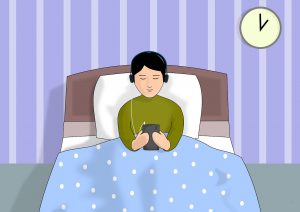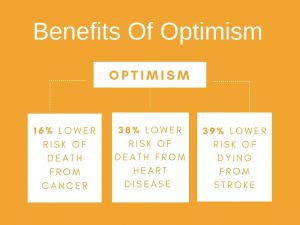Social anxiety is one of those things that we kind of started to make light of during the pandemic – you know, saying how we finally had an excuse to cancel our plans, and stay home and avoid the “peopley” outside world. But if you’re living with social anxiety disorder (SAD), even more mild versions of it, you know that the discomfort of it and the disruption to your life that it can cause are very real, and aren’t all that funny. You’re not just shy, or introverted, and you don’t need to brush off any symptoms you might be experiencing, but you do need to recognize it for what it is. The first step is speaking to your doctor or a mental health professional, but you can also take steps to help get your social anxiety under control and make things a little lighter in your life – and now’s the time, as we start to come back together after so long apart!
What Is Social Anxiety Disorder?

It’s generally pretty common to feel nervous in at least some social situations, like a first date, or if you’re giving a presentation at work – even parties where you don’t know anyone but the host can be daunting for people who consider themselves extroverts. Social anxiety, however, is more than butterflies in your stomach in nerve-racking situations: it’s an intense feeling of self-consciousness, or an irrational fear that you’re being scrutinized and judged by others, and it can actually interfere with your everyday life and relationships, especially if it leads to avoidance of social interaction.
When you have to do things like interact with strangers, make eye contact, or initiate a conversation, you might get hit with any number of symptoms if you’re struggling with social anxiety. Many of them will be all in your head, otherwise known as cognitive symptoms, like:
- Fearing situations where you don’t know other people
- Worrying that you will be judged by others
- Fearing that you’ll be embarrassed or humiliated
- Thinking that others will notice your anxiety
- Dreading upcoming events weeks in advance
- Expecting the worst possible consequences from a negative experience during a social situation
- Analyzing your “performance” and picking out flaws in your interactions after a social situation
Other symptoms are displayed in your actions; these are behavioral symptoms and can include:
- Avoiding social situations
- Leaving or escaping from social situations
- Using “safety behaviors” that help you avoid certain situations
Like we said, butterflies in the stomach can be normal, but social anxiety has different physical symptoms, like:
- Blushing
- Profuse sweating
- Trembling hands
- Muscle tension
- Racing heart
- Feelings of detachment from yourself
- Nausea or diarrhea
These symptoms can be intense enough to lead to full-blown panic attacks and a diagnosis of social anxiety disorder, but remember, you might be still struggling with some form of social anxiety even if you aren’t diagnosed with full-on SAD, or if your symptoms are mild. So, in addition to medication and therapy (if those are appropriate for you), what are some things you can do to help relieve your symptoms, and begin to feel more at ease in the world?
Work on Your Skills
They say practice makes progress, right (well, we prefer the kinder version of the saying, since there’s no such thing as “perfect”)? And that includes working on your social skills! It might feel a little silly to sit down and think about how you’re going to tackle what seems to come so naturally to other people, but it can be really helpful to plan ways to make progress in your communication skills. For example:
- Struggling with social anxiety often goes hand-in-hand with lacking assertiveness, so try out saying “no” in situations that require it, and by using “I” statements to communicate your needs to others.

- Notice how you non-verbally communicate with others: are you standing with arms folded, shrinking into yourself? It can be hard to own your space, but try to be aware when you’re closing yourself off physically, and then try a more relaxed stance, so you can look – and feel – more confident and approachable.
- When it comes to verbal communication, start small by getting used to jumping into conversations using the old, “Oh are you talking about X? I saw that too!” and then practicing listening and asking open-ended questions. Finally, try opening up and sharing more stories about yourself so others can get to know you!
Let It Out
Social anxiety can make you retreat into yourself, so it’s important to find a release, both physically and emotionally. Start by practicing being aware of how your anxiety affects your breathing: is it quick and shallow? If this is the case, slow down and breathe in through your nose, out through your mouth in counts of 3, until you’ve calmed your breathing, and can return to the normal rate of 10-12 breaths per minute.
Finding an emotional release might feel harder, but the solution is simple: you need to tell someone about your social anxiety. Speak to a friend or family member, and help them to understand what you are going through; having someone who you feel is “on your side” can be a huge relief. The bonus is that they can gently remind you that many of the things you are worried about have been greatly magnified in your head, and, as an outside observer, they can assure you that you aren’t being judged the way you often feel you are.
Challenge Negativity
And speaking of magnifying things in your mind, if you’re dealing with social anxiety, you’re most likely misinterpreting the facial expressions and other reactions of people around you, and adding a negative spin to them. In fact, you’re probably engaging in two very negative thought patterns:
- Mind Reading – You might assume that you know what everyone around you is thinking about you, and you’ll put it all in the worst possible light as you project your anxieties onto others.
- Personalizing – You might interpret other people’s behaviors as being related to you; for example, if someone is yawning, you might assume that you are boring them, or if they don’t respond to a message right away, you might assume that you have done something wrong and they are upset with you.
The best way to deal with these negative thoughts is by first figuring out the situations that trigger them, and then taking a step back and asking yourself questions to challenge them. For example, what are some other explanations for the yawning or the delayed reply that don’t have anything to do with you? There are always alternative explanations, so think of this before you jump to any negative conclusions!
Take a Chance on You
Avoidance is easy when you have social anxiety, and the more you avoid social situations and interactions, the more you will fear them (and you’ll also find more and more situations to avoid). So take charge of your anxiety, and take a chance on yourself: find some little things you can do to break free from your avoidance. For example:
- Tell a funny story about yourself to people you know well, and then to people you don’t
- Voice your true opinion to someone you know, and then to a stranger
- Make a toast at a party
- Stand up for something in a way that shows you aren’t afraid of the negative opinions of others
- Follow your values, and get involved
Take a Chance on Others
Again, social anxiety can make you feel trapped in your own head (are you seeing a pattern here?), so find some creative ways to get out of that space! Take the focus off of yourself for a little while by focusing on others and reaching out: try brightening a friend’s day by sending them a card in the mail, invite friends over and make them feel at home, initiate a conversation with someone, introduce yourself to someone, or introduce a friend to someone else.
Get Physical
Exercise is great for boosting endorphins, but don’t just go out for a solitary run: challenge yourself! Try a dance or yoga class, or another group fitness activity that will both challenge your body and challenge your image of yourself as someone who doesn’t join in.
R-E-S-P-E-C-T
Speak to yourself kindly. Speak to yourself the way you would to a friend who was struggling with their self-esteem. Build yourself up, and you’ll train yourself to be more compassionate with yourself.
Find Strategies That Work For You

Having some practical, everyday strategies in your toolbelt is a great idea if you’re struggling with social anxiety. For example:
- At work, try arriving to meetings early, so you can greet people individually, instead of being thrust into a room full of colleagues. Determine if this strategy helps you socially, as well.
- Make a list of questions you need to ask of someone in a position of authority, so you can start with the least anxiety-inducing ones first, and progress from there as the conversation gets rolling.
- Avoid alcohol as a crutch for getting over your inhibitions.
- Commit to meeting new people or having spontaneous social interactions by greeting people, giving compliments, or starting brief conversations.
- Get regular exercise and eat healthy foods to keep you fighting fit in body and mind!
The Don’ts of Dealing with Social Anxiety
While you should definitely be approaching dealing with your social anxiety in a positive way, and we don’t really want to focus on what you shouldn’t be doing in your life (after all, social anxiety is not something you chose and it’s not your fault!), there are some ways of approaching it that can be less than helpful. For example:
- Remember what we said above? Practice makes progress. There is no such thing as perfection, so don’t worry about being perfect. On the other end of the spectrum, remember also that the worst-case scenario is rarely what’s going on!
- Social anxiety is something that you can work on, but don’t become obsessed with it as a character flaw that needs to be stamped out – you’ll only end up being more focused on it, and retreating into yourself more.
Remember, your social anxiety does not define you, and it’s not just a personality trait like shyness or introvertedness: you can work towards overcoming it! Speak to a trusted professional, and then try some strategies to help you relax, challenge the negativity that’s plaguing you, and even face your fears. After all, you deserve to live the fullest, most fulfilling life possible!




















